Exposed: Britain's secret role in the Martin Luther King cover-up
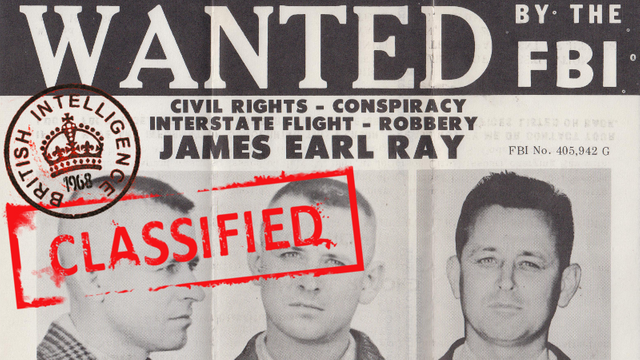
FIFTY YEARS ago this week –- on June 8, 1968 –- the suspected assassin of Dr Martin Luther King Jr was arrested in Britain. It can now be revealed that the British Government's Minister for the Home Office embarked on an audacious cover-up, which eventually involved the office of the nation's Prime Minister.
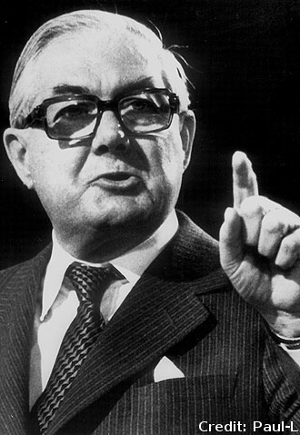
Newly-obtained documents show that the UK's Home Secretary James Callaghan -– pictured right -- subverted legal processes and concealed evidence of police corruption in his haste to get suspect James Earl Ray out of the country.
Callaghan's actions were intended to placate US President Lyndon Johnson during a decade of great political strain between the two men's nations.
A decade later, in 1978, Callaghan had become Prime Minister of the UK and -- by a twist of fate -- was confronted with the consequences of his earlier actions when the USA launched a new Congressional inquiry into Dr King's murder.
Privately, British officials believed the Congressional inquiry was being stage-managed in order to pacify the US public and subdue a threat to the social and political stability of the United States themselves. And so Callaghan found himself forced to mount a second and far bigger cover-up to aid the UK's greatest strategic ally once again.
The Very Long Arm of the Law
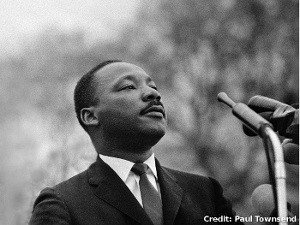
Ray was transported from Wandsworth Prison to appear in person at the hearing, but testified that the police were inventing charges against him in order to justify his extradition. Specifically, Ray was alleged to have made racist remarks, overheard by one of his guards, which provided “reasonable grounds for suspicion” that Ray had indeed shot King.
Years later, Ray told author William Bradford Huie that:
"[Metropolitan Police Chief Superintendent Thomas] Butler said I made a statement (oral) [while in prison]. I denied this in open court as I had not made any statement. When Mr Butler returned me to the prison after the hearing, I wrote a letter (reg[istered]) to the following official: Mr James Callaghan, Home Secretary, House of Commons, London, England. I asked Mr Callaghan to bar Mr Butler from having any further contact with me, as it was my belief that he was lying about me in court in regards to a statement at the behest of the US Attorney-General's office. (I never did receive an answer. Would it be possible to receive a duplicate of that letter from Mr Callaghan's office?)" (Emphasis supplied)
Not only did Ray deny that he had made the remarks that were being treated as damning evidence against him, he had written to the Home Secretary himself, to lodge his protest. But as Huie's account makes clear, Ray's letter to Callaghan was swallowed up in silence.
That may have been the last Ray heard concerning his complaints of police corruption, but his letter had dramatic behind-the-scenes consequences.
For the time being, however, Ray stayed in Wandsworth Prison, Butler stayed in charge of the police investigation, and the US extradition warrant was granted. Who was ever going to believe James Earl Ray's word over Chief Superintendent Butler's?
Perverting the Course of Justice
The Bow Street hearing was over in a minute or two. After it had finished, there was no longer any threat of Ray being prosecuted in the UK. This judicial conjuring trick was described in the words of a later police memo:
"Charge (1) possession of a false passport was withdrawn by leave of the court. Charge (2) Possession of a firearm. No evidence offered and dismissed by the court under the provisions of Section 7 Magistrates Courts Act 1952." (sic throughout)
“By leave of court” means “at the free decision of the bench”. The court had simply decided not to bother with the false passport offence. The firearms charge was more serious, and could not be waved away. So a brief legal pantomime was performed: the prosecution declined to present any of its evidence and the court obligingly threw the case out.
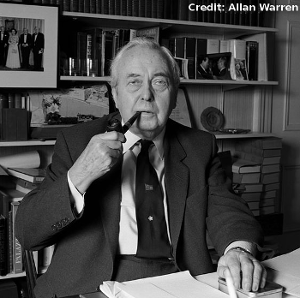
The two figures instrumental in aborting the trial would have been the Lord Chancellor (a Cabinet Minister overseeing the judicial system) and the Director of Public Prosecutions (a high-ranking civil servant, rather than an elected politician).
Both positions work closely with the Home Secretary, who also has ministerial oversight of Britain's policing and prisons. In 1968, the Home Secretary was James Callaghan MP, serving under Prime Minster Harold Wilson (pictured above)
There was more. During his brief spell in the UK James Earl Ray was believed to have committed an armed robbery at a London bank. In fact, he was the sole suspect -- but no charges were ever brought against Ray for the crime. Years later, a British Government official would admit that there had never been any intention to prosecute Ray for this offence. "Turning a blind eye" to the bank robbery was nothing more than a "quick fix" solution, designed to deliver Ray swiftly back to the States and straight into the clutches of the expectant FBI. The relieved British officials could never have imagined that their decision not to prosecute Ray for the bank robbery would one day return to haunt them.
After his discharge by the Bow Street court, Ray was immediately driven from Wandsworth Prison in South-West London (where he had remained throughout), across the city, and northward to the county of Suffolk. His destination was RAF Lakenheath, a base that the Royal Air Force had shared with the US Air Force since 1959. There, Ray was handed over to US authorities, strapped into restraints, and swiftly removed from the UK under cover of darkness - aboard a USAF plane that departed at 38 minutes after midnight on July 19th.
But why had the British Government been willing to let Ray escape justice in the UK by handing him over to US justice so quickly?
The Deep Politics of the Vietnam War
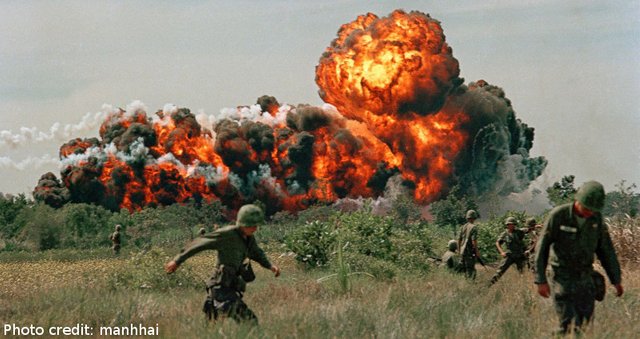
THE ENTIRE saga of Ray's capture was played out against a backdrop of racial strife and general discontent in both the US and UK. The April 1968 killing of Dr King sparked a two-month wave of riots across the USA. New York, Detroit, and Chicago were among the cities engulfed in chaos, with state police forces, the National Guard, and even the US Army engaged on US streets. More than 20,000 people were injured, and 39 killed, with nationwide damage estimated at over $65m (1968 value).
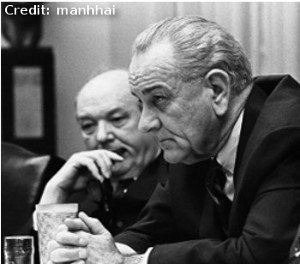
In practice, this meant refusing to commit British troops to the Vietnam War itself, while quietly providing a degree of background support (such as training US soldiers in jungle warfare using British techniques learned in Malaysia during the 1950s). The Prime Minister's refusal to join the Vietnam War cast a shadow over Wilson's entire time in office during the 1960s. This was especially awkward because the UK's economy was so unstable that American cash injections were never far from Wilson's thoughts.
As a Wilson cabinet minister, James Callaghan made a visit to Washington DC in June 1965, to secure US financial aid for the British economy. Callaghan's biographer Kenneth Morgan later wrote:
Much controversy centred after Callaghan's visit on whether US aid to Britain had been linked with British support for American policies in Vietnam. Callaghan himself always strongly denied that any linkage had ever been brought up in discussions in which he was involved.
Morgan comments on Callaghan's denial: “Literally, this is quite correct,” before admitting that “it was obvious that Vietnam lay in the background” to the meeting. That is an unnecessarily polite of putting it.
In his autobiography, Callaghan himself says that during the hour he spent with Johnson in the Oval Office, he barely got a word in, while Johnson lectured him “with passion and determination” about Vietnam.
Callaghan enjoyed – if that is the right word – a considerably better relationship with Johnson than Harold Wilson ever did while Prime Minister. Callaghan believed Johnson to be “despite his faults, a very warm-hearted and human man”, whereas Johnson distrusted Wilson and thought him slippery and unreliable.
It is not difficult, therefore, to detect Callaghan's politically and personally sympathetic influence at work in the legal machinations that developed from the arrest of James Earl Ray in 1968. But – much later – the workings of time and chance meant that Callaghan was confronted with the evidence of his own deviousness. And this time, he was in the perfect position to cover it up for good.
All Rights Reserved by the Author, June 6, 2018
Part 2 of this story was published June 8th, and can be read here.
Curated for #informationwar (by @wakeupnd)
Relevance: Exposing government lies.
Our purpose is to encourage posts discussing Information War, Propaganda, Disinformation and other false narratives. We currently have over 7,500 Steem Power and 20+ people following the curation trail to support our mission.
Join our discord and chat with 150+ fellow Informationwar Activists.
Ways you can help the @informationwar
Get your post resteemed to 72,000 followers. Go here https://steemit.com/@a-a-a
Get your post resteemed to 72,000 followers. Go here https://steemit.com/@a-a-a
✅ @garrickalder, I gave you an upvote on your first post! Please give me a follow and I will give you a follow in return!
Please also take a moment to read this post regarding bad behavior on Steemit.